The modern home is wrought with piping systems that enable us to have luxuries such as running water, heating, and cooling, but in winter temperatures, these pipes can cause you some big problems if you aren't careful. The condensate line to your furnace is no exception. Your furnace must be functioning correctly when cool weather hits, so how do you ensure this doesn't happen? We've done the research to help.
To prevent a condensate line from freezing, you can:
- Keep the line clean.
- Insulate the drain.
- Place ice melt beneath the drain line.
- Have an HVAC professional install insulation.
Now that we've given you some ideas on preventing the condensate line from freezing, we'd like to help you further by giving you more detailed instructions and answering some common questions. Keep reading to learn more.
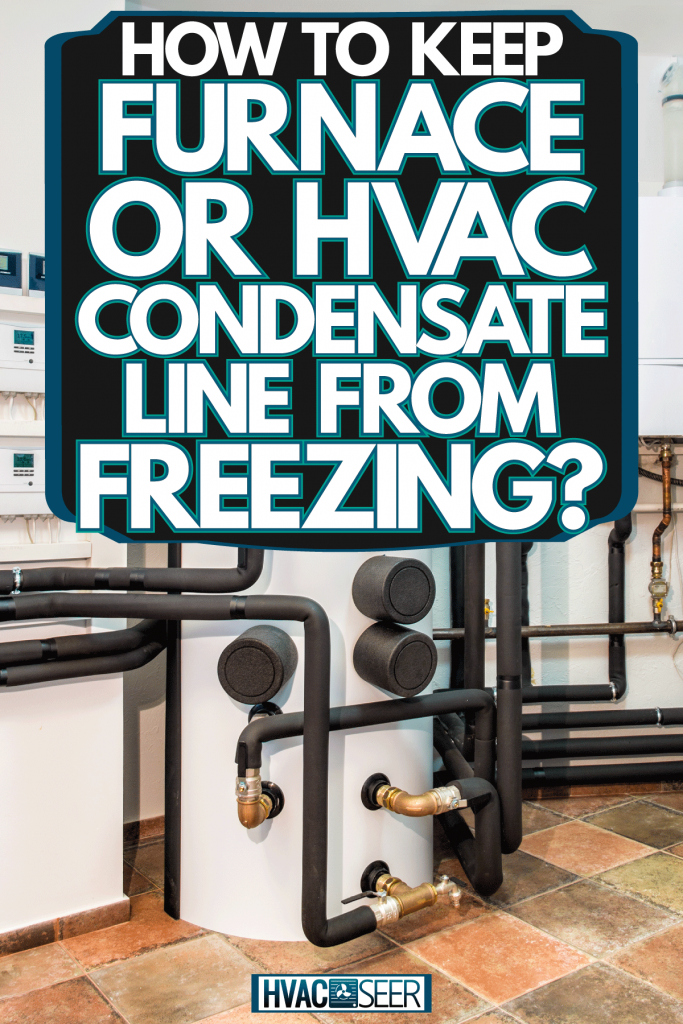
The Condensate Line
The condensate line is just a tiny part of your HVAC system, but it's very important to the design. To understand how to prevent it from malfunctioning, it's helpful to understand what it is and why it's important.
What Is It?
The condensate line is essentially a drain. Humidity is collected as air is heated and cooled in the HVAC system. This could quickly become an issue for the system, but engineers have considered this when creating the condensate line.
The humidity is transformed into condensation and released through the line. This line is connected to the outdoors through an exterior wall, where the condensate is delivered to the outdoors. These lines can be composed of PVC or metal.
Why Is It Important?
Exposure to water will cause most machines to malfunction or fail. This is just as true with air conditioners and furnaces. An excess of moisture will also cause rusting as well as the growth of mold and bacteria, something you surely don't want in your air.
So the condensate line is critical to ensure that you have steady cooling, heat, and clean, healthy air. Modern HVAC units typically release all of their moisture through the condensate line, either by pumping it through the line or utilizing gravity.
Preventing A Frozen Condensate Line

Prevention is key when it comes to this issue. We've researched some great ways to keep your condensate line and furnace functioning this winter.
At What Temperature Does Condensate Freeze?
Condensate will freeze at 32 degrees Fahrenheit. This is important to keep in mind as you head into cooler weather. If you believe that the low temperature on an approaching day will be at freezing or below, you should consider preventing a malfunction in the line.
Here are a few tried and true ways to prevent your condensate line from freezing and keeping your home warm and cozy.
Keep The Line Clean
Debris blocking proper drainage will often contribute to a frozen condensate line. A small amount of ice within the line isn't ideal, but it also wouldn't cause the whole system to fail. However, if a large blockage of ice is in the line, this will cause the entire system to stall.
There is a higher probability of this happening if debris is built up inside the line. This may be leaves, dirt, or lint. This will prevent the condensate from adequately draining, causing it to pool and possibly turn to ice within the line.
Cleaning the line before cold weather hits is good practice. This can be done easily by first cleaning the line's access point using vinegar, hydrogen peroxide, or dishwasher soap.
Once this has been done satisfactorily, you can flush out the line with warm water until you see that it is running through with a clean, steady stream.
Insulate The Drain
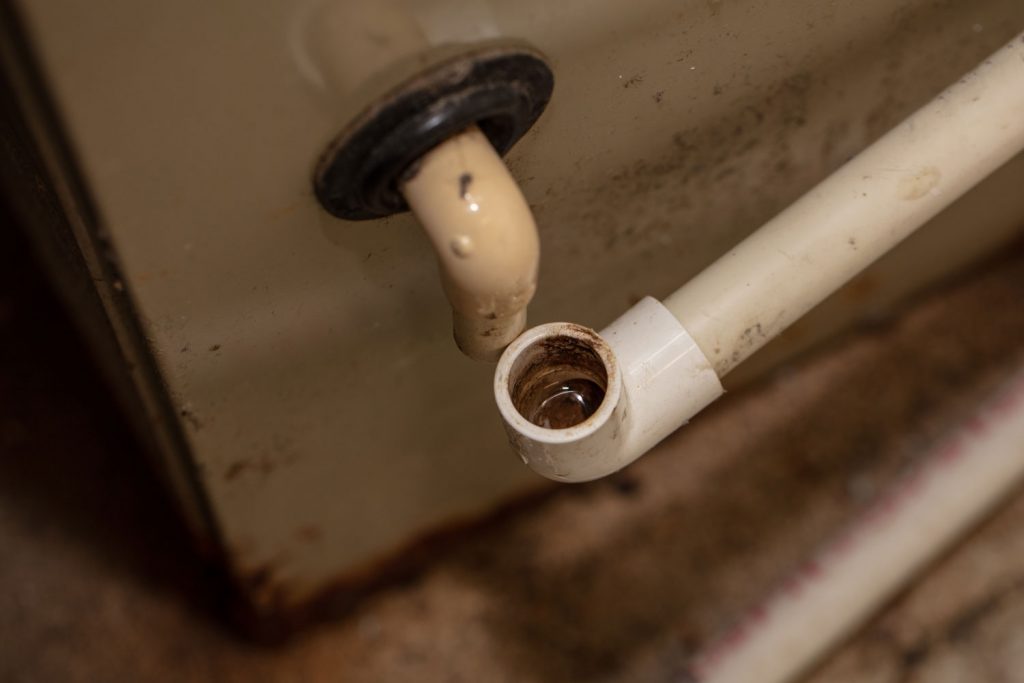
Once you're sure that your condensate line is clear, you can take further steps to ensure that your condensate line does not freeze. One of these is insulating the drain.
This can be done with weatherproof insulation material. These will be sold in a roll and can be installed easily. You will start by taping the end of the strip to the pipe. Then begin to wrap the strip around the pipe, overlapping each layer.
When you have finished wrapping the pipe, you can use duct tape to secure the other end of the strip to the pipe. If desired, you can add more tape to keep the insulation secure. Only be strategic in its placement, so you don't cause yourself difficulty when replacing the insulation.
Take a look at this insulation wrap on Amazon.
Use Ice Melt
Ice melt is a substance that works by lowering the freezing temperature of the water. Pretty nifty, right? It can help keep your condensate line from freezing.
By coating the underside of the condensate line with ice melt before freezing temperatures hit, you can prevent the condensate which travels through from reaching a freezing point inside the pipe.
This is an extremely easy remedy, but it's also the most temporary and undependable. The ice melt could easily be washed away and will have to be regularly applied to be of benefit.
Take a look at this pet-safe ice melt on Amazon.
Insulation By HVAC Professional
The most permanent of remedies is contacting an HVAC professional to either install insulation material inside the condensate line or install an entirely new, pre-insulated condensate line to the system. This is the most expensive of the options, but it will provide you with the most peace of mind as cool weather begins.
Fixing A Frozen Condensate Line
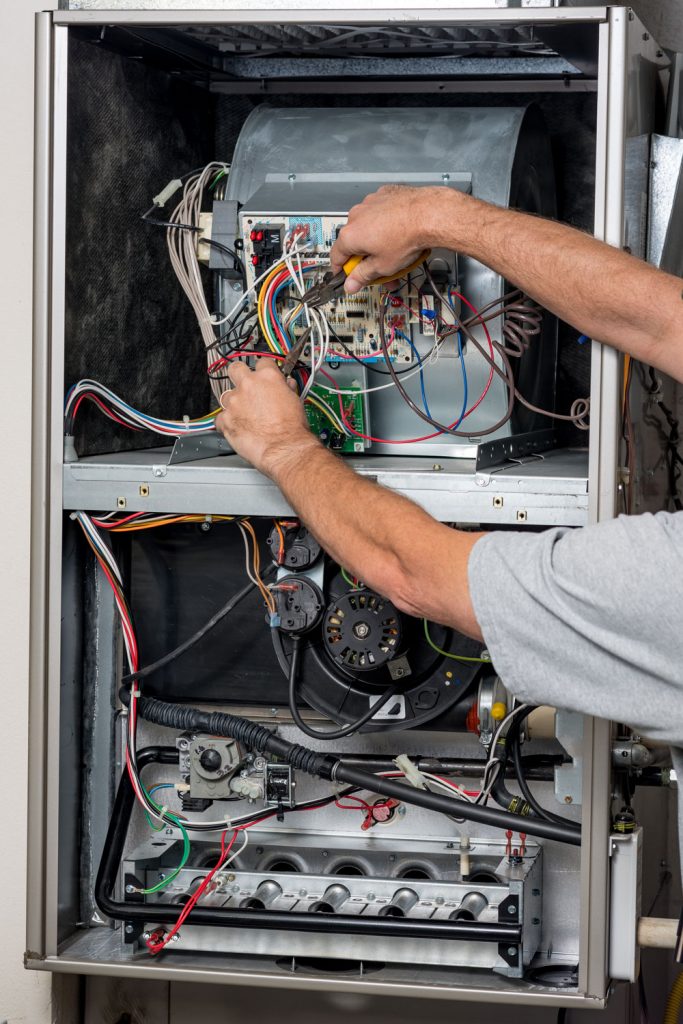
We've given you ideas on how to prevent this issue from happening, but what if you believe it already has? We can give you some guidance.
How Do You Know If Your Condensate Line Is Frozen?
The first step is determining whether your condensate line is frozen or if you are experiencing some other issue. Most likely, you've already noticed that your home is no longer being provided with heat or warm water, so you've begun to investigate.
The first step is to visit your furnace controller panel to be sure that the heater has stopped working. If this is the case, the panel will likely show a fault code, such as "F4". This indicates that a problem has been detected, signaling to the system that it should stop running.
If you have found this to be true, the next step is to visually inspect the condensate line. You may see ice at the end of the pipe or shine a flashlight into the pipe to check for ice. If you see this, you can trust that you have found the source of the problem.
How Do I Defrost The Condensate Pipe On My Furnace?
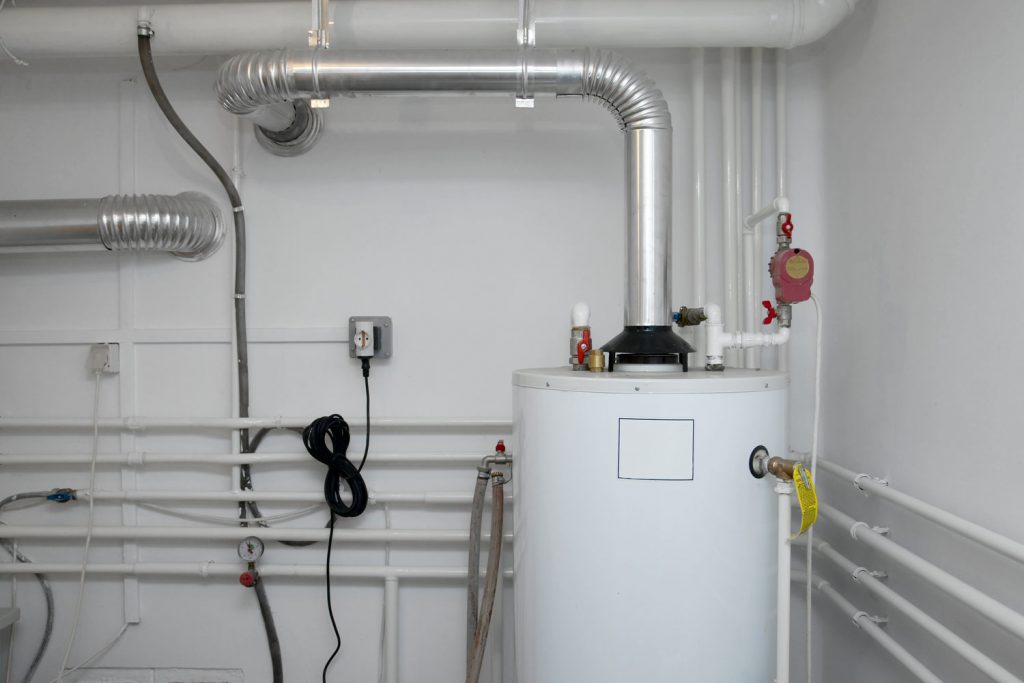
So now you need to know what to do about it. Thankfully, this is a relatively easy problem to take care of. Though it may be unpleasant, especially if it's freezing outside.
You could use a hot water bottle or heating pack to defrost the pipe, but the best way is to use a pot of boiled water. If you can locate the ice blockage, start pouring the water over the pipe in that area. Otherwise, start at the beginning of the exposed pipe and work downward.
You may have to do this more than once, but it will begin to melt and remove the frozen condensate. Once the pipe has been thoroughly cleared, you may need to reset the furnace to receive heat.
Why Is My Condensate Line Freezing?
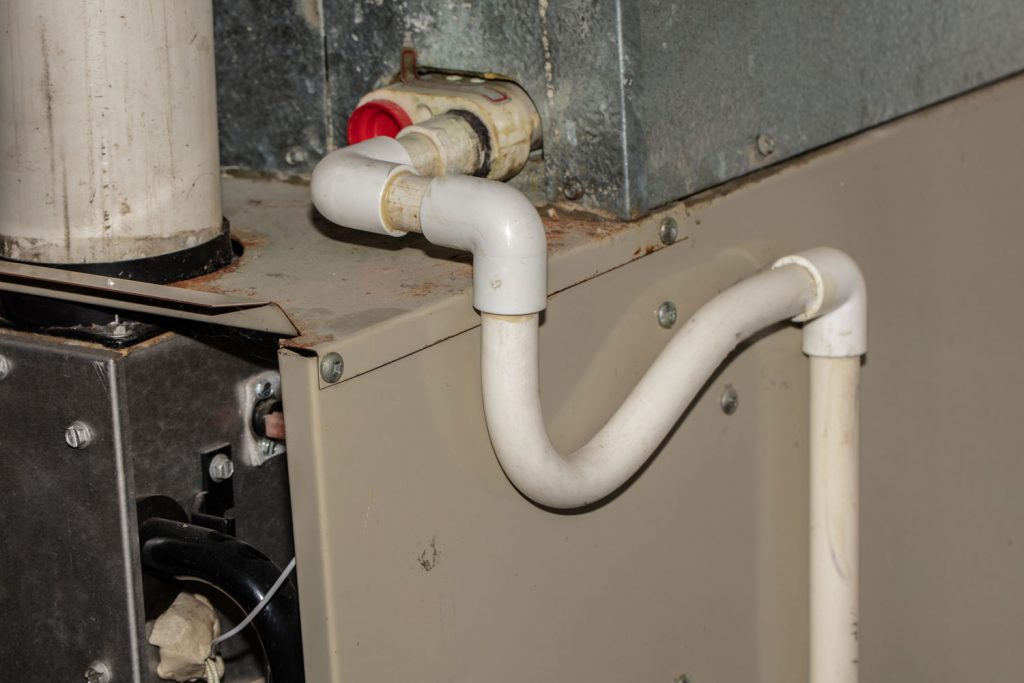
Maybe this is an issue that you have dealt with quite often, and you'd like to know why it has persisted, despite your efforts to prevent it from happening. As previously discussed, a condensate line that is not cleaned properly will always be at risk of freezing.
Another risk factor to consider is the line itself being improperly installed or perhaps being insufficient for your climate type. At times, condensate lines are not sloped correctly, preventing the condensate from draining.
In other cases, the condensate like on your HVAC system may not be equipped with the necessary insulation, especially if you live in a particularly cold climate.
In Conclusion
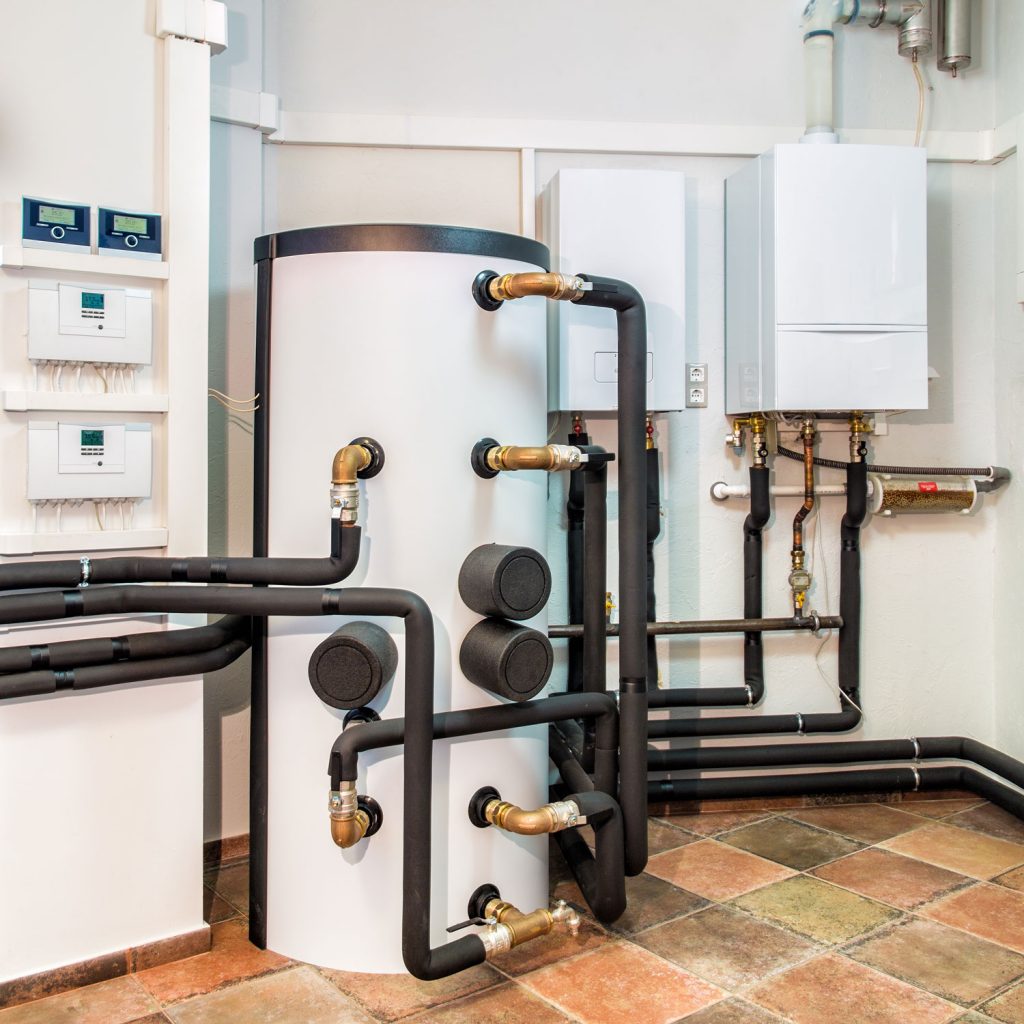
One of the most alarming issues in a home is for the heating system to fail in freezing weather. The condensate line freezing can often cause this.
We've given you four suggestions to prevent this from taking place, including cleaning the line, insulating the drain, coating the line with ice melt, and contacting an HVAC professional to install insulation. We hope that these recommendations will aid you in staying warm this winter!
Want to learn more about furnace troubleshooting? Visit these related posts:


